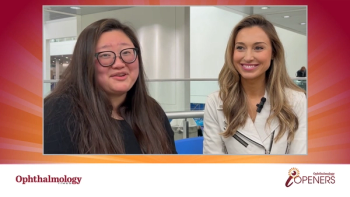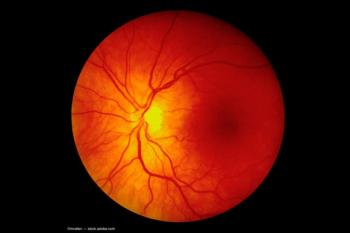
Binocular implantation, meticulous surgical technique key factors for IOL success
There are a number of measures that can be employed to improve success with implantation of the new IOLs. Speaking in a spotlight session on pseudophakic IOLs at the annual meeting of the American Academy of Ophthalmology, Samuel Masket, MD, presented a series of clinical tips for achieving excellent results and high patient satisfaction in recipients of the AcrySof ReSTOR (Alcon Laboratories) apodized diffractive IOL.
There are a number of measures that can be employed to improve success with implantation of the new IOLs. Speaking in a spotlight session on pseudophakic IOLs at the annual meeting of the American Academy of Ophthalmology, Samuel Masket, MD, presented a series of clinical tips for achieving excellent results and high patient satisfaction in recipients of the AcrySof ReSTOR (Alcon Laboratories) apodized diffractive IOL.
His list included the recommendation to implant both eyes with the ReSTOR to allow cortical summation.
"All presbyopia-correcting IOLs create a compromise between quality of vision and the need for spectacles," stated Dr. Masket, clinical professor of ophthalmology, Jules Stein Eye Institute, University of California Los Angeles. "If we allow them to summate, we will get the best of any particular product, but if we divide the eyes between two IOLs, we run the risk of side effects of both and summation of neither."
He described additional technical tips, including "the four As" - astigmatic correction and control, accurate biometry, appropriate formulae, and adjust the optical outcome. Dr. Masket explained minimizing astigmatism is important for optimizing image quality, and 0.50 D represents his threshold for tolerated cylinder. He also noted that with respect to controlling surgically induced astigmatism, the ReSTOR platform has the advantage of being able to be implanted through a 2.2-mm incision.
For a refractive target, Dr. Masket aims for emmetropia to minimal hyperopia and he advocated use of the IOLMaster for biometry whenever possible, IOL power formula selection based on axial length, and use of keratorefractive surgery or other techniques as needed to optimize the optical outcome.
Performing impeccable surgery is also critical. Dr. Masket's technique incorporates a small clean incision, astigmatic adjustment, a centered 5-mm capsulorhexis, use of techniques and instrumentation to avoid capsule rupture, and centration of the IOL on the visual axis after the viscoelastic has been removed.
"Do not allow the surgery to be the limiting factor to a successful outcome," he stated.
Newsletter
Don’t miss out—get Ophthalmology Times updates on the latest clinical advancements and expert interviews, straight to your inbox.













































